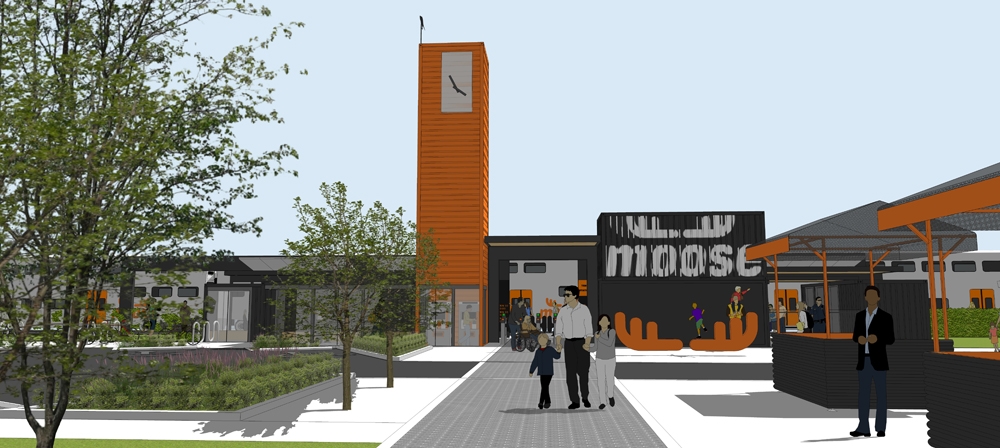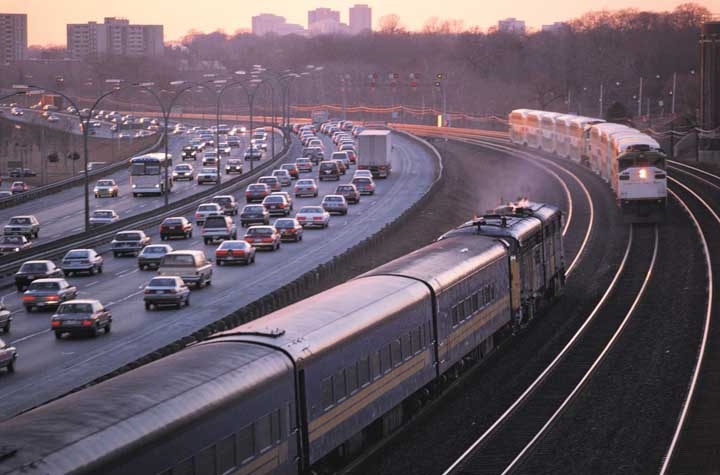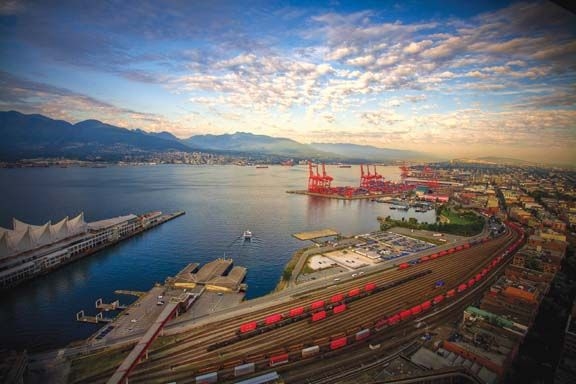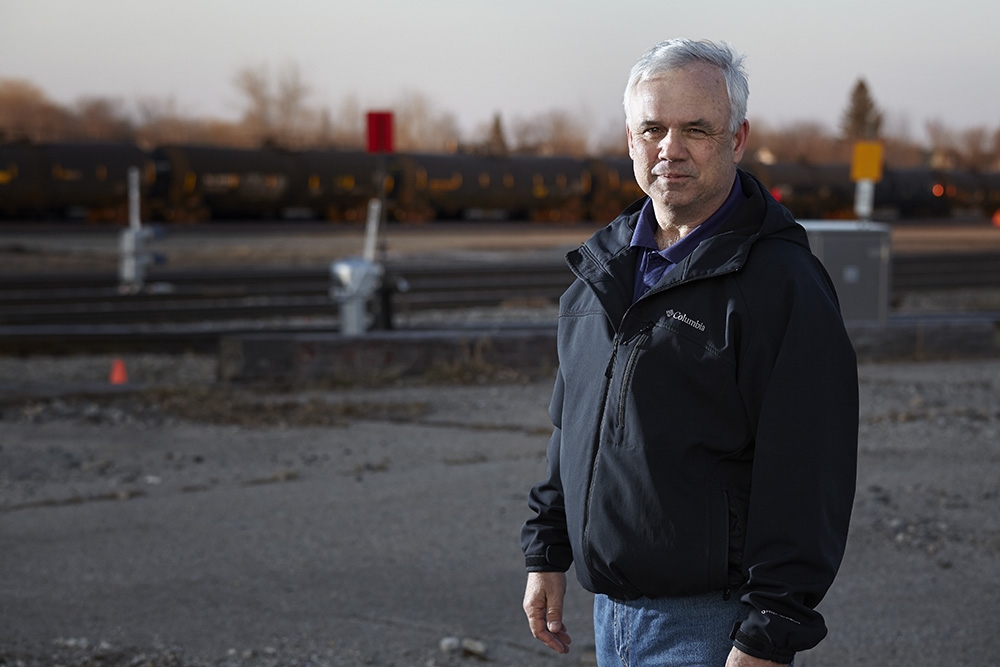
Making Tracks
There’s a Moose on the Loose and It’s Making Commercial Rail a Reality in the Capital.
There’s been quite a buzz around the Prince of Wales Bridge lately. The City of Ottawa bought the bridge that cuts across the Ottawa River in 2005. It has been sitting unused ever since, except by “trespassers”.
It appears few people are aware of its true purpose; it is the only existing rail connection between Ontario and Québec in the National Capital Region. Its construction was authorized by the Parliament of Canada in 1867, and was completed by the Government of Quebec 126 years ago.
A group of entrepreneurs led by Joseph Potvin, an experienced economist and local businessman, is planning to bring the bridge back to its former glory as the centrepiece in a 400 km passenger railway for the greater National Capital Region.
Related: Prince of Wales Bridge: History or Hazard?
Moose Consortium Inc. (Mobility Ottawa-Outaouais: Systems & Enterprises) plans to use existing railways for a property-financed service to connect about 50 localities throughout the region. They extend out to Arnprior, Smith Falls and Alexandria in Ontario, as well as Bristol, La Pêche and Montebello in Québec.

Moose Consortium is made up of a dozen, mostly local, businesses that came together to make Potvin’s dream a reality: commercial, affordable and green. They are linked with Canada’s largest insurance broker, Aon Reed Stenhouse.
REMISZ Consulting Engineers Inc., a Moose Consortium member company, developed a $50 million plan to restore the Prince of Wales Bridge to working condition. They would also install segregated cycling and pedestrian pathways along each side. Under the city’s direction, there are no current plans for these train tracks to be used, leaving this most valuable stretch of rail in the region untapped.
“It would cost in the range of $100 million and many years to build such a bridge today”, said Wojciech Remisz, Director of Engineering.
Added to this, Moose plans to build walking and biking trails along most of the 400 km of railway, as well as to accommodate bicycles inside the trains.
Mark Thompson Brandt of MTBA Associates Inc. is a nationally recognized conservation architect and urbanist, and another of Moose Consortium’s five directors.
“This project will stoke at the heart of cultural heritage of the region,” says Brandt. “Canada grew up on trains. We want to re-envision the bridge and show people that it’s got deep value, in both connectivity to the past and what it’ll mean for our future.”
The initiative is also expected to significantly cut down on local traffic and carbon emissions. According to Moose, the train service would result in 25,000 fewer cars in the downtown area each day, cutting the region’s carbon emissions by 20,000 tonnes a year.

Brandt has designed a rapid yet sustainable way to get the entire 400 km railway system up and running by deploying trendy modular stations adapted from large railway shipping containers.
“These start-up stations will be simple and customizable. We want them to fit with the feeling of each location and to be appropriate to its setting,” said Brandt.
Moose’s business model is unorthodox. Its most innovative aspect is that each station would be an independent enterprise. With a few exceptions, train services will only be offered where the average rent and property values within a 0.8 km radius of each station are expected to increase by at least 25 percent over the base value. The property owners in each “Linked Locality” keep part of the value added, and under contract they would pay a standard proportion of that value to get train service — a “train stopping fee”. They’d pay that because the additional profit over base value which they keep is due to the train service. This means the entire railway system won’t depend upon taxes, government funding or even on passenger fares to function.
In economic terms, this is called land value capture. A 2007 review of more than a hundred studies in the Journal of Real Estate Finance and Economics by Dr. Ghebre Debrezion, an external advisor to Moose, quantified the effects of metropolitan railway stations on commercial and residential properties within an easy walk. And a 2016 review from the Victoria Transport Policy Institute concluded, “that proximity to transit often increases property values enough to offset some or all of transit system capital costs.”
But Moose, by creating a competitive market for independent stations, would be the first commercial venture to extend the land value capture model all the way.
Their plan is so radical that the Consortium plans to implement a “pay what you want” system for passengers. You’ll have the choice whether or not to pay for the ride. But all money paid by customers would go into what Potvin calls a “passenger experience fund”. All trains will have on-board washrooms and refreshments. Larger stations could have subsidized daycare and walk-in health clinics.
“Not a cent from passengers will go towards running the primary train service.” Potvin said. Passengers’ money will go towards making the service even more attractive, to generate market demand for properties near stations. “That’s where the real money is,” he reasons.
The trains themselves will be three double decker (bi-level) coaches, each with a café on the second level. Every coach will have a different atmosphere for passengers: a quiet coach, a place to be social, and even a coach with scheduled live musicians.
While Potvin deals with the economics of the project at Moose, Bill Pomfret is the company’s guide on all aspects of safety. Pomfret has been working globally in health and safety for the last 50 years. The international safety system he’s developed has been implemented in companies like Exxon and the Hong Kong private sector railway, MTR. Now he’s dedicated his passion and expertise for safety to Moose Consortium.
“You never get a second chance to get it right the first time. Safety cannot be an afterthought,” said Pomfret, adding that almost all accidents are completely and easily preventable. Even though Moose trains are not operational yet, Pomfret says the team has made safety part of every weekly meeting. He has 15 training courses already set up, and a culture of safety of Moose is built right into the core business design.

For Smiths Falls Ontario Mayor Shawn Pankow, Moose would be a solution to several problems.
“We currently have hundreds of residents who commute to and from Ottawa for work, either driving themselves or car pooling. Commuter rail would provide a far more green solution that would get these people to and from work in a safer, potentially quicker manner,” says Pankow. He also said it would help grow the community.
But not all small communities want growth.
Caryl Green is the Mayor of Chelsea, Quebec and president of Transcollines transit, the publicly-funded bus system in the Outaouais region. She worries that Moose’s commercial railway will conflict with their current transportation system, and will increase Chelsea’s low density population, something the citizens of the region have expressly voted against.
“We really do support public transportation, but we were given a choice between rail and bus, and we chose bus,” says Green.
Potvin responds that buses and trains are entirely complimentary.
“Our common problem is overdependence on cars”, he said. “Once Moose rail is operational, bus services such as Transcollines will be able to provide even better service for passengers to more neighbourhoods.”
As for maintaining low density in Chelsea, Potvin says that Moose wouldn’t interfere, and that will remain entirely in the hands of the town council and staff.
“Because our revenue comes from within the short 0.8 km radius around each station, that’s the only density that matters for our service to work,” said Potvin. “The rest can be farms or forest.”
Still, clearly some people are reticent.
“We have some great fans and some people just don’t want to talk about it,” says Potvin. But neither he nor the Moose directors seem discouraged by their obstacles.
“Doesn’t the pro golfer always try for a hole-in-one, even if it’s improbable?” asked Potvin with a smile.









